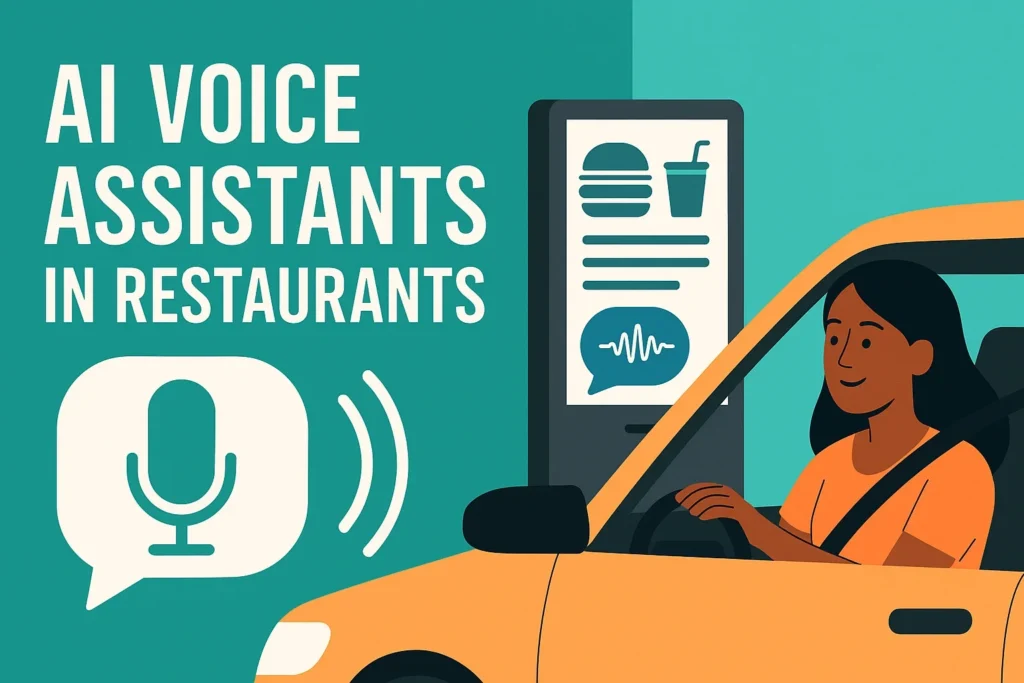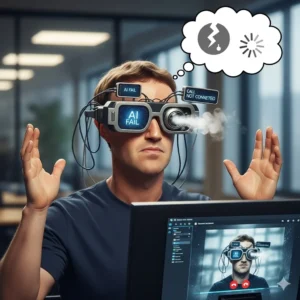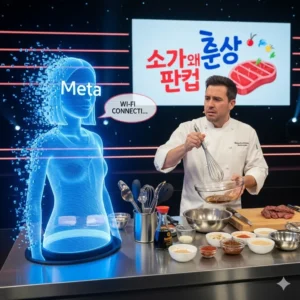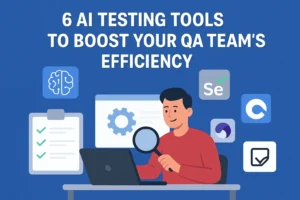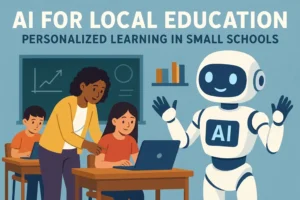The rise of technology has changed the way restaurants operate in recent years. Possibly the most exciting change is the use of AI in restaurants.
Voice-enabled AI assistants are making the work of both customers and staff easier. These AI tools can place orders and make personalized suggestions. This article will examine ways AI voice assistants can improve the dining experience.
Easy Ordering
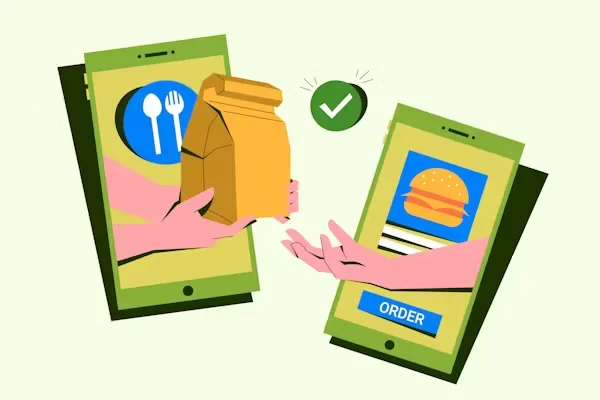
With voice-enabled AI, ordering food is fast and straightforward. Customers don’t need to speak to someone; they can discuss their order. This system can order more quickly and accurately, avoiding errors.
AI can understand special requests, such as those related to allergies or specific dietary requirements. Using AI, customers can handle these things smoothly while ordering from an app, at a kiosk, or even on the drive-thru.
The technology is already being used in several places. Some restaurants, for instance, have already integrated AI-powered voice assistants into their drive-thru systems. Here, wait times are reduced, and thus, are accurately taken.
Kiosks that listen to your voice give in-restaurant ordering a modern, smooth feeling. It helps both the restaurant and the customer run more efficiently.
Personalized Suggestions
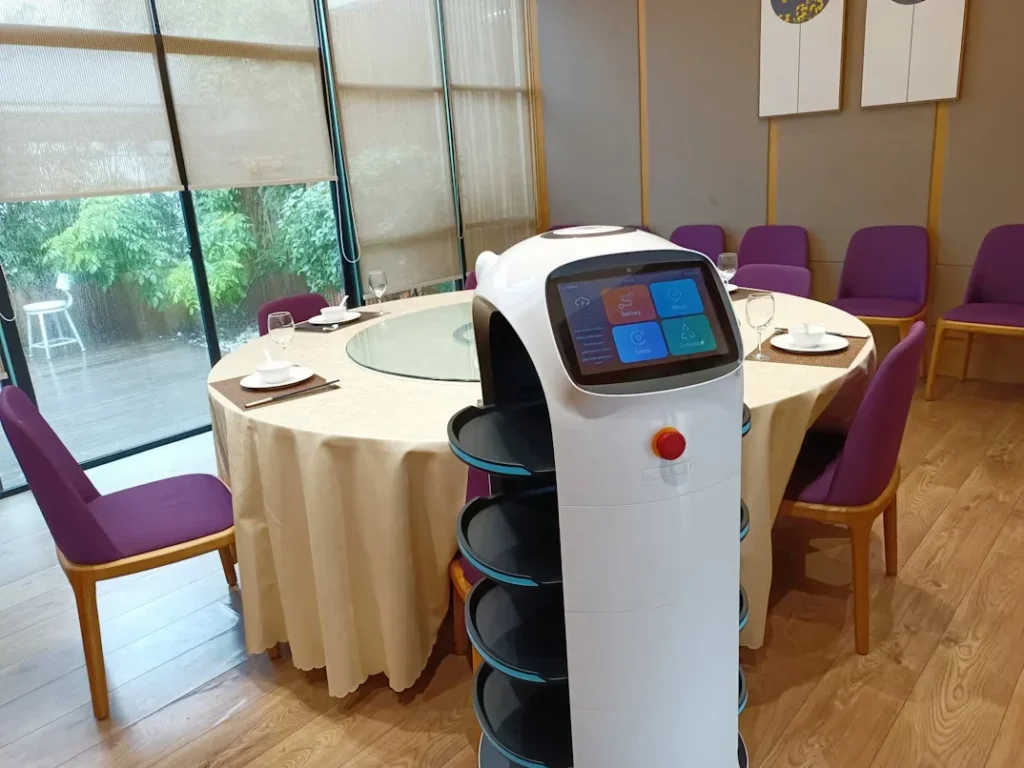
AI doesn’t just take orders. It can also provide suggestions based on a recipe’s popularity among those who have purchased similar items in the past or among individuals with similar tastes. For example, AI voice assistant systems can learn what you prefer to order (a vegetarian order, perhaps, or your favorite meal). The personalized touch of dining is what makes it feel special.
Even better, these systems can perfectly upsell drinks or desserts that complement the main course. AI can suggest items you might like, help restaurants sell more, and you get a good meal.
According to a survey, in 2024, about 36% of Australian restaurants utilized AI for data analysis and inventory management. Another everyday use of AI in restaurants is helping chefs create new menu items. These insights demonstrate how AI will become an even more significant focal point in enhancing dining experiences.
Better Efficiency
It’s not just customer service for AI. Behind the scenes, it also helps staff. Kitchen staff can communicate more effectively with waiters by utilizing voice-enabled systems. In other words, it means orders are processed more quickly, and the likelihood of making a mistake is lower.
| Area | AI Contribution | Benefits |
|---|---|---|
| Staff Communication | Voice-enabled systems between kitchen staff and waiters | Faster order processing, fewer mistakes |
| Inventory Management | Tracks stock levels, sends reorder alerts | Prevents ingredient shortages, reduces food waste |
| Table Management | AI assigns tables to clients efficiently | Reduces wait times, improves space organization |
| Resource Utilization | Voice-enabled AI optimizes space and staff coordination | Maximizes operational efficiency, enhances customer experience |
In fact, AI can also help with inventory management. It can track stock levels and notify employees when to reorder. It prevents essential ingredients from running out, allowing restaurants to remain open. It also helps limit food waste by keeping everything organized.
AI can also better manage restaurants’ tables. With AI, they can precisely determine which tables to assign to each client, thereby decreasing wait time and enabling staff to maintain a well-organized space. An AI voice assistant will allow restaurants to utilize their space and resources more effectively.
Inclusive Service
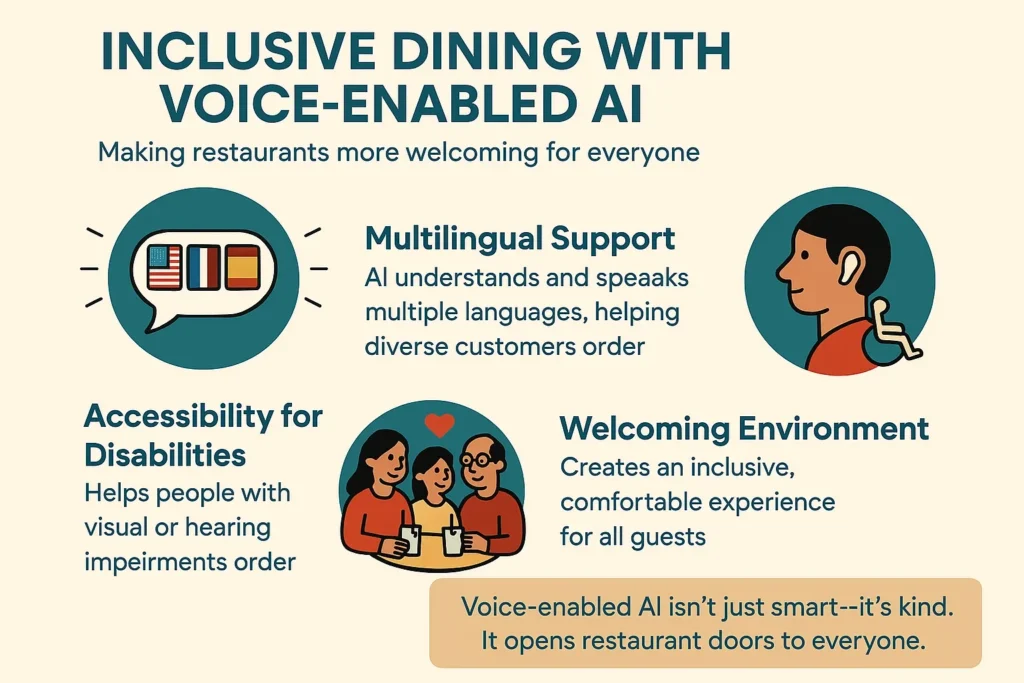
AI brings dining to everybody. AI understands and responds in multiple languages, allowing customers speaking different languages to place orders smoothly. This creates a welcoming atmosphere for all types of customers.
Voice AI is beneficial for people with disabilities. It enables individuals with impaired vision or hearing to order food and receive assistance independently, without requiring assistance from a person. With this technology, restaurants become more inclusive, enabling everyone to have a wonderful and seamless dining experience.
Data Insights
Another advantage of AI is that it helps you collect and analyze data. AI can track information when a customer places an order or provides feedback. This enables restaurants to make more informed decisions about their menus, pricing, and marketing strategies.
For example, if one dish is being ordered less frequently, AI may suggest removing it from the menu or offering a promotion to increase sales. It can also inform a restaurant when it will be busy and when to staff accordingly. With this information, restaurants can be ahead of their competition and keep customers content.
Contactless Experience
Safety is a high priority nowadays. An AI voice assistant is a contactless option for ordering and paying for meals. It means less physical interaction, which is ideal when running something that requires keeping staff and customers safe. With the COVID-19 pandemic, more people prefer touchless services, which is precisely what voice AI-assisted services are designed to provide.
Because customers can enjoy a safer, hands-free experience, restaurants will be able to attract customers whose main objective is to reduce contact during their visit. It also speeds up and makes the dining experience easier for all concerned.
Challenges Faced by Restaurants Using AI
Despite all these benefits, AI has some challenges in restaurants. Setting up AI systems for small restaurants could be pretty expensive. Technology also has to run smoothly with the restaurant’s system, which can sometimes be challenging.
Privacy is another concern. Restaurants must ensure that customer data is protected and not misused. Any technology comes with security risks, and restaurants must make sure that information is protected.
Conclusion
This is happening with AI voice-enabled dining. However, we are not there yet to deliver a good AI experience for restaurant customers. AI is making the ordering experience easier and helping restaurants serve customers more effectively, efficiently, and quickly.
But realistically or not, AI isn’t going away and will probably become more common in the restaurant business. This will enable them to stay informed about what’s happening in the industry and keep up, resulting in a great customer experience.
AI enables restaurants to offer a more modern, personalized, and secure dining experience. As more businesses implement Voice-responsive AI, we’ll continue to see how our dining out will only evolve positively.






